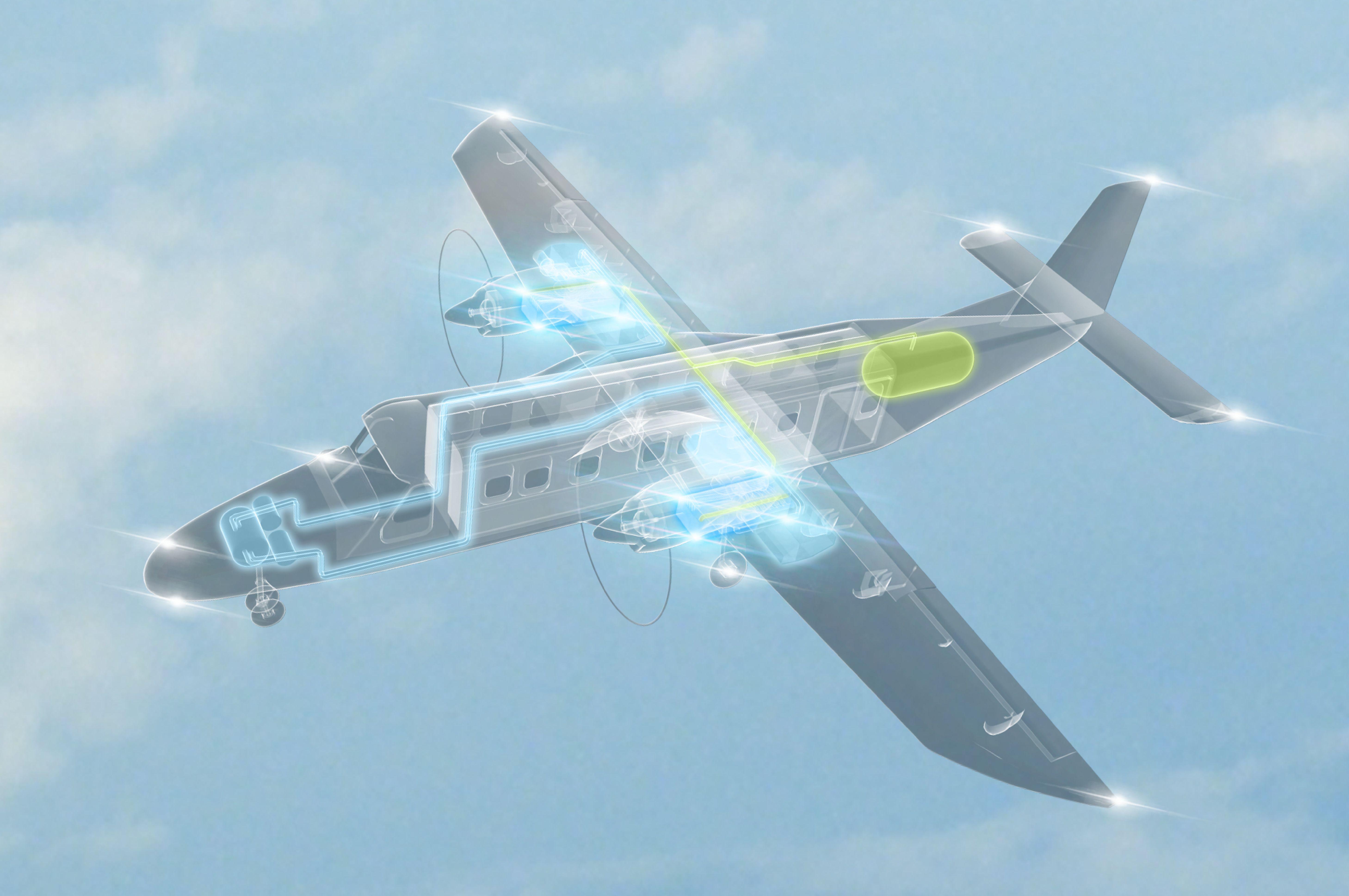
BERLIN—MTU Aero Engines says it has identified a Flying Fuel Cell (FFC) and Water Enhanced Turbofan (WET) as “favored” concepts for revolutionary reductions in emissions from aircraft propulsion systems.
The statement at the ILA Airshow on June 23 omits a previously stated MTU concept for a composite cycle variant of the Pratt & Whitney Geared Turbofan (GTF) engine, which adds a piston compressor and motor to the baseline turbomachinery.
Instead, the FFC’s electric drivetrain and the WET concept’s advanced turbine are now the stars of MTU’s Clean Air Engine (Claire) program, which aims “to put the goal of zero emissions within reach” by 2050, the company says.
“Revolutionary new propulsion concepts will be needed,” says Stefan Weber, MTU’s senior vice president of engineering and technology.
The WET concept engine proposes to build on an improved version of the GTF by 2035. The WET engine adds a condenser to collect water from the GTF’s exhaust gas and a heat exchanger to vaporize the water into steam, which is injected into the combustor. Such a Steam Injected Gas Turbine configuration should dramatically reduce the ozone-depleting nitrous oxides creating during combustion, MTU says.
The WET concept should reduce the propulsion system’s impact on climate by 80%.
The FFC has a target to electrify the powertrain for short and medium-haul aircraft by 2050, MTU says. If fielded by then, the electric-powered aircraft could reduce climate impact by 95%, the company adds.

Comments